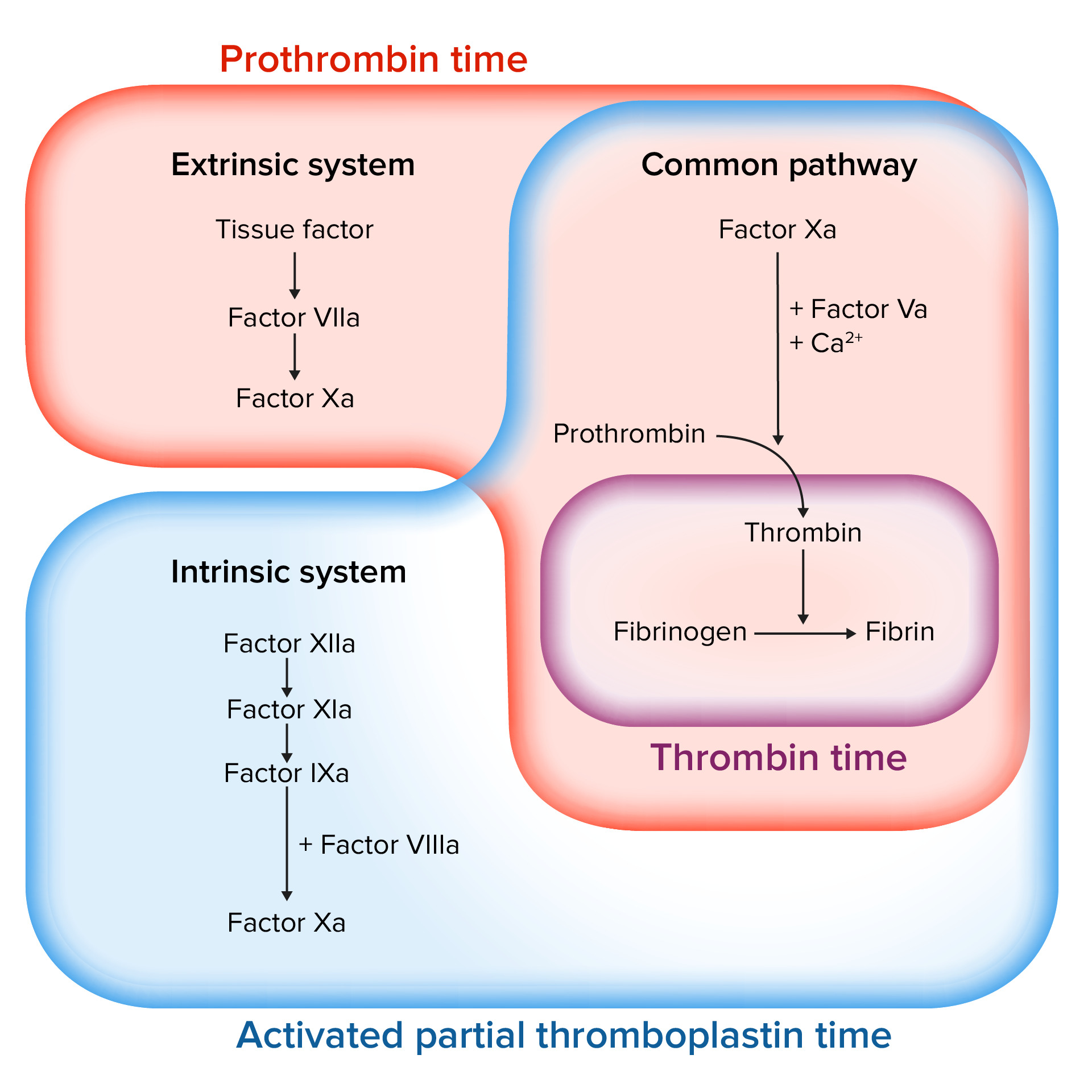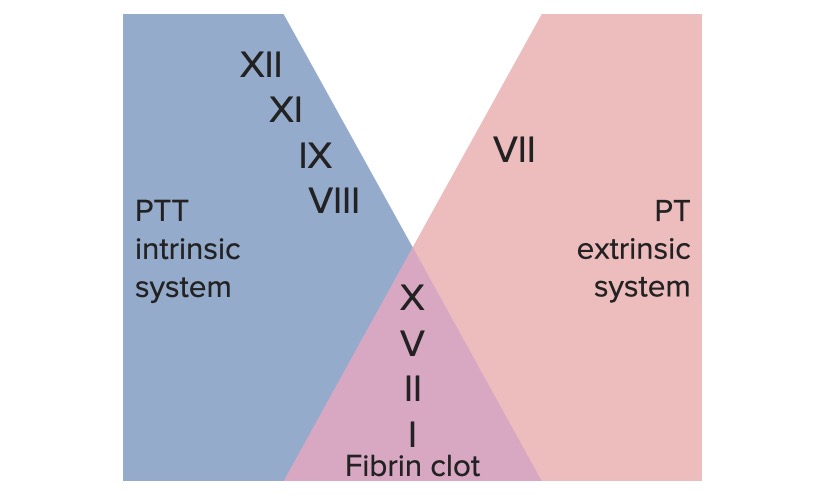Playlist
Show Playlist
Hide Playlist
Increased Bleeding Time
-
Slides NormalHemostasis.pdf
-
Download Lecture Overview
00:02 Let's talk about that bleeding time. 00:04 Now, before we take a look at that, bleeding time. 00:07 What is my actual time? 2 to 7 minutes. 00:11 What is bleeding time measuring? Let me give you three options. 00:15 Is it measuring the activity of your platelet? Is it measuring the activity of your coagulation cascades? Intrinsic or extrinsic? It's only measuring the activity of your platelet. 00:27 There are two reasons as to why the bleeding time could be elevated, meaning to say above 7 minutes. 00:33 One could be, the platelet itself wasn't properly aggregating or adhering, or number two, the platelet wasn't present, we call that thrombocytopenia. 00:46 Let's take a look at aspirin. 00:48 What does aspirin do? Remember, NSAIDS and aspirin inhibits COX. 00:54 In the COX pathway of the arachidonic acid pathway, what was the component responsible for platelet aggregation, remind me? Thromboxane, TXA2, thromboxane. 01:06 Renal failure may then cause platelet aggregation defect. 01:09 When it does, you'll have an increase in bleeding time, look for that. 01:13 Please do not confuse renal failure with nephrotic syndrome, okay? In nephrotic syndrome, you may lose in maybe about 5 to 10 percent of your patient's antithrombin III. 01:27 If you lose antithrombin III, your patient is in the state of hypercoagulation. 01:33 Fascinating, isn't it? Whereas if it's renal failure, like I said, we don't know exactly what the signaling is yet but we definitely know that the platelets are not functioning properly. 01:43 And then, for whatever reason that cause thrombocytopenia. 01:47 For example, you've heard of immune thrombocytopenic purpura? You've heard of thrombotic thrombocytopenic purpura, ITP, TTP or even in DIC, disseminated intravascular coagulopathy. 02:00 Those are conditions in which your platelet count is going to drop, no doubt. 02:04 Those are the conditions in which you would find an elevated bleeding time. 02:10 Now, be careful here, Von Willebrand disease, now, the type that I am only going to focus upon is the type of Von Willebrand Disease where the patient is deficient of Von Willebrand factor. 02:22 Now, our topic for this discussion is only bleeding time. 02:26 So therefore, Von Willebrand factor, if it's not present, now you remind me, the fact that we have an elevated bleeding time, is that due to, not binding to glycoprotein 1b, or is it due to the fact that factor VIII will not be stabilized? It's the prior, isn't it? So when you don't have the Von Willebrand factor binding to glycoprotein 1b, you can expect the bleeding time to be elevated.
About the Lecture
The lecture Increased Bleeding Time by Carlo Raj, MD is from the course Hemostasis: Basic Principles with Carlo Raj.
Included Quiz Questions
Which of the following factors is mainly affected in von Willebrand disease?
- VIII
- III
- X
- IX
- VII
Which of the following tests is most commonly abnormal in von Willebrand disease?
- Bleeding time
- Prothrombin time
- International normalized ratio
- Thrombocytopenia
- Anemia
Customer reviews
5,0 of 5 stars
| 5 Stars |
|
5 |
| 4 Stars |
|
0 |
| 3 Stars |
|
0 |
| 2 Stars |
|
0 |
| 1 Star |
|
0 |





